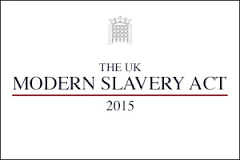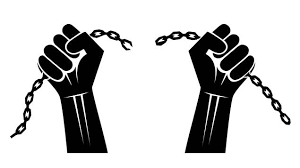The Modern UK Slavery Act: Supply Chain Risk Management
 The United Kingdom has a number of interesting ideas and policy initiatives. The UK Bribery Act was a strong statement against corruption, but remains unenforced.
The United Kingdom has a number of interesting ideas and policy initiatives. The UK Bribery Act was a strong statement against corruption, but remains unenforced.
The United Kingdom has enacted the Modern Slavery Act, which imposes a number of new requirements on global companies. The Modern Slavery Act is modeled after California’s Transparency in Supply Chains Act, but is much broader in application. The Modern Slavery Act applies to all organizations that carry on business in UK with a minimum turnover above £36 million.
Covered organizations are required to prepare a slavery and human trafficking statement for each financial year. The reporting obligation applies to UK businesses and foreign businesses.
The statement must describe the steps the organization has taken to ensure that slavery and human trafficking is not occurring in any part of its own organization. If the company has not made any effort, the statement must acknowledge its lack of effort.
- The statement should cover six basic areas:
- The company’s structure, business and supply chains;

- A summary of the company’s policies and procedures relating to slavery and human trafficking;
- An analysis of parts of the business and supply chains where the risk of slavery and human trafficking exists and steps taken to manage such risks;
- A measurement of the company’s effectiveness in preventing slavery and human trafficking; and
- Training programs provided to employees and representatives that address slavery and human trafficking requirements.
The company’s statement has to made public, published on the company’s website, and must be approved by an appropriate senior person in the company, typically the company’s board of directors and signed by a director.
The Modern Slavery Act does not have any enforcement provisions, except that the Secretary of State can order a company to produce a statement if the company fails to do so. The reputational harm to a company that fails to produce a statement could be significant.
 Companies need to consider a number of steps to ensure compliance and integrate slavery and human trafficking requirements into its business operations. A broad policy statement and procedures to implement the policy has to be designed. A risk assessment, like any other risk, is the starting point in this process.
Companies need to consider a number of steps to ensure compliance and integrate slavery and human trafficking requirements into its business operations. A broad policy statement and procedures to implement the policy has to be designed. A risk assessment, like any other risk, is the starting point in this process.
As part of the risk assessment process, a company has to examine its structure, geographical areas and product sectors, and identify suppliers that should be subject to reporting requirements. In managing the risks, the company has to adopt due diligence procedures to assess potential risks from new vendors and suppliers. Finally, a company has to ensure that it has appropriate terms, tender requirements and supplier codes of conduct to impose compliance requirements on its vendors/suppliers.















